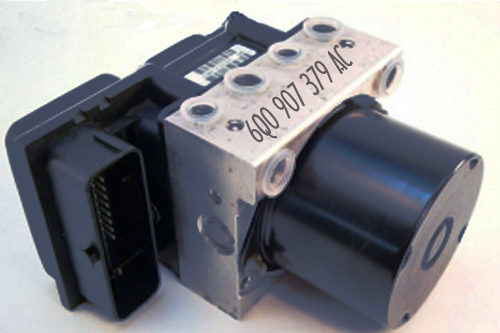EPC LIGHT EXPLAINED
As I mentioned before in my older blogs, the new generation of VW cars are designed to turn on an EPC Light (not check engine light) so that only the Volkswagen dealership service technician or technicians are supposed to do any an all servicing and repairs. The VW workshop manuals specifically discourages anyone other than a qualified or trained mechanics / auto-electrician and automotive technician to perform servicing, especially changing codes and performing readiness test. This is because incorrectly set readiness and adaptation settings can completely disable your car and virtually render it useless. To repair it would then cost a small fortune.CHECK ENGINE LIGHT
An earlier blog, covers some late model VAG cars with fuel injection and electronically controlled throttle body instead of the traditional accelerator cable controlling the throttle valve. It is called Drive-by-wire or DBW for short. When the Engine Control Unit -ECU, which invariable is a computer in its own right detects a fault Diagnostic Trouble Code - DTC in the Drive-by-wire system, it registers a fault Diagnostic Trouble Code - DTC in its non volatile memory and turns on the EPC light, disables the accelerator and throttle body, limit the engine to a maximum of 1500 rpm -"Limp Mode". This would be sufficient power to "Limp Mode" the car to a service centre without causing further damage to the car or unduly polluting the air should the fault cause it to smoke. This is a safety precaution and can be equated with, what would happen if an accelerator cable got stuck in the downward position. Disaster could follow. The Engine Control Unit -ECU collects faults Diagnostic Trouble Code - DTC from all senders and stores an internal list, which is only visible with a diagnostic tester. Diagnostic Trouble Code - DTC can range from excessive emissions to - intermittent air bag connections, from brake light failure to - depleted brake pads, from interior ultrasonic failure to - immobilizer problems to even disconnecting the battery. Each of these faults generates codes, some of which can be viewed in future blogs.Should the Volkswagen Engine Control Unit -ECU considered a Diagnostic Trouble Code - DTC to be so serious that it could possibly do harm to the engine or the environment, it will inhibit the throttle function and limit the engine revs or even disable starting or idling completely. Unfortunately the only way to repair such problems, is to connect the Volkswagen Golf, Jetta, VW Polo, or Volkswagen Beetle, to a dignostic tester through its CAN-Bus / OBD2 / OBDII port and view Diagnostic Trouble Code - DTC if any and Diagnostic Trouble Codes, clear them from memory and perform corrective procedures. Below is an overview of the Electronic Power Control Circuit - EPC and how the Drive-by-wire system operates.
+SCHEMATIC.jpg) |
| The basic operation of the Electronic Power Control (EPC) Schematic showing inputs from drive-train sensors and output signals to drive-train actuators. |
Like wise, when the brake light bulbs blow or the fuse to the brake circuit blows, an INput signal from the brake light sender could also activate the Electronic Power Control Circuit - (EPC), turning on the EPC warning light causing the car to go into "Limp Mode" because driving a car on a public road without brake lights is an accident just waiting to happen. In fact the Engine Control Unit (ECU) looks upon this car as non-roadworthy as a safety procedure. In a previous blog I described an Electronic Power Control Circuit - (EPC), which switches on the EPC light problem caused by an INput signal from one of the knock sensors with the same results as above. Other senders INputs that can cause similar problems are:-
The Engine Speed Sender G28 situated at the flywheel.
The Hall Sender G40 situated at camshaft pulley
The Hot Air Mass Meter G70 and intake Air Temperature sender G42 situated near intake manifold.
The Lambda probe G130 situated upstream of catalytic converter
The Lambda probe G39 before catalyst converter
The Knock sensor I - G61 below intake manifold
The Knock sensor II - G66 below intake manifold
The Accelerator Position Senders G79 and G185 embedded in accelerator pedal (EPC Problem)
The Clutch pedal switch F36 situated in the drivers foot well.
The Brake light switch F and brake light switch F47 situated in the drivers foot well.
The Throttle control valve / motor drive assembly J338
The Angle Senders G187 and G188 situated inside throttle body.
The Fuel Pressure Sender -G247
NB! VAG car owners who found this site to be helpful
were interested in the following sites as well.
expowp, epc warning light, service engine light, photojani, service engine light on, service engine light on, controversy365, check engine light service, epc car light, epc in car, nerdytoys, epc light on car, what is epc on a car, lovelifelovehealth, check engine codes, check engine light codes, sightsofcapetown, what does epc mean, what does epc mean in a car, sowpbox, what does epc mean on a car, check engine light, electroniques, check engine light flashing, check engine light on, blogspot-at, blinking check engine light, flashing check engine light, photo-magix, service engine soon, service engine soon light, godssites, what does check engine light mean, glycomix, arth-ritis, forex-bid, foodsofthecape, engine warning light, languagesbarrier, yellow engine light, pimpyocar, what does the check engine light mean, e-gimos. |
| MAKE REAL MONEY ONLINE WITH FOREX |



